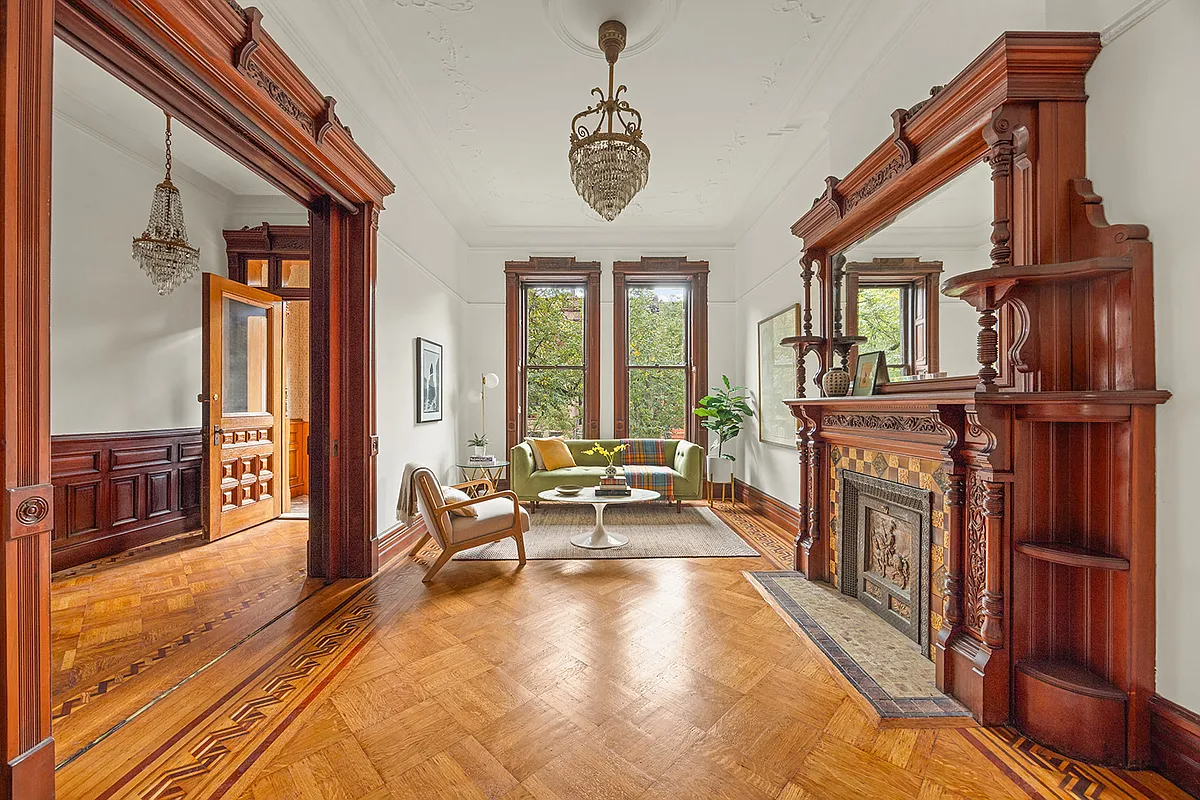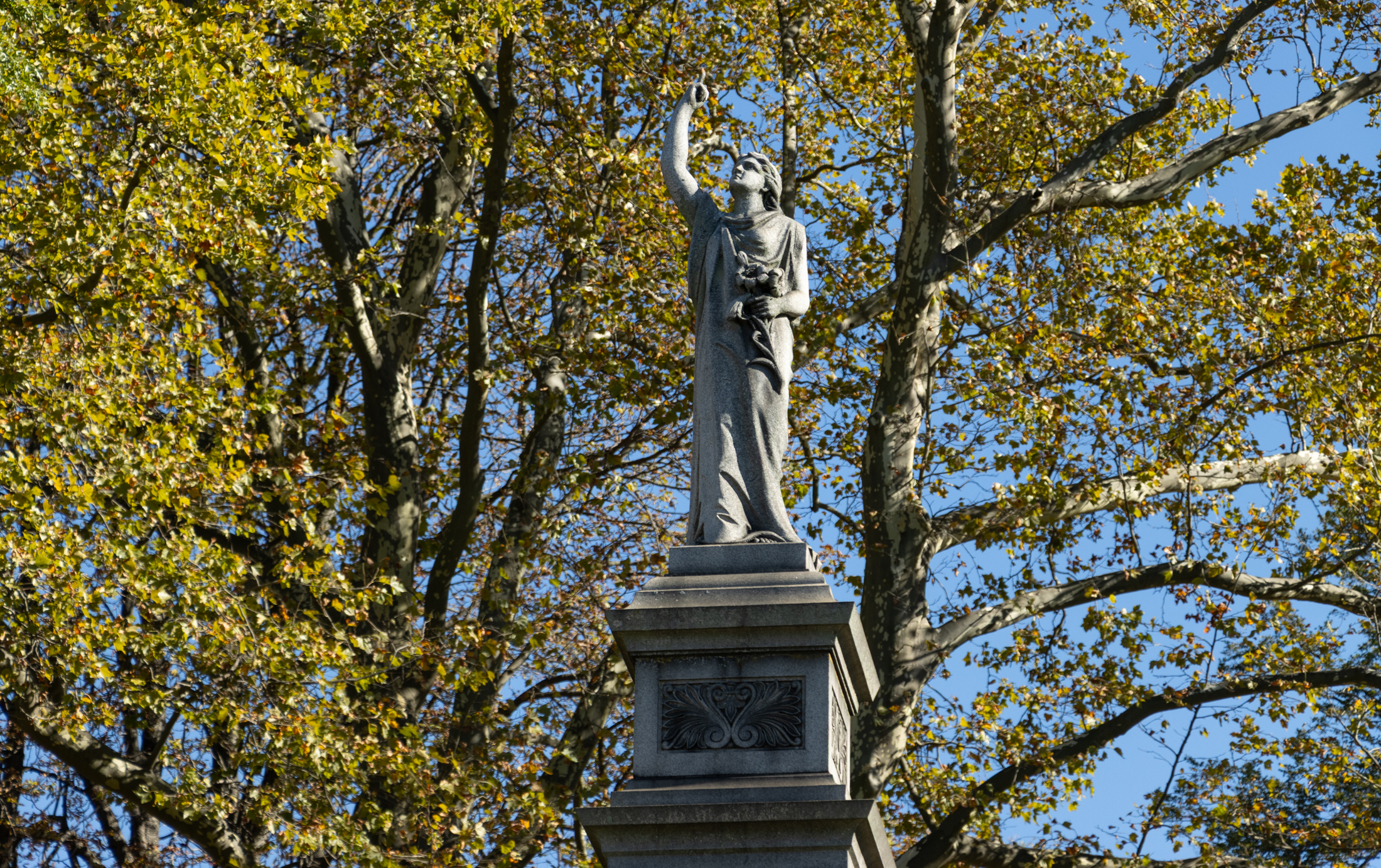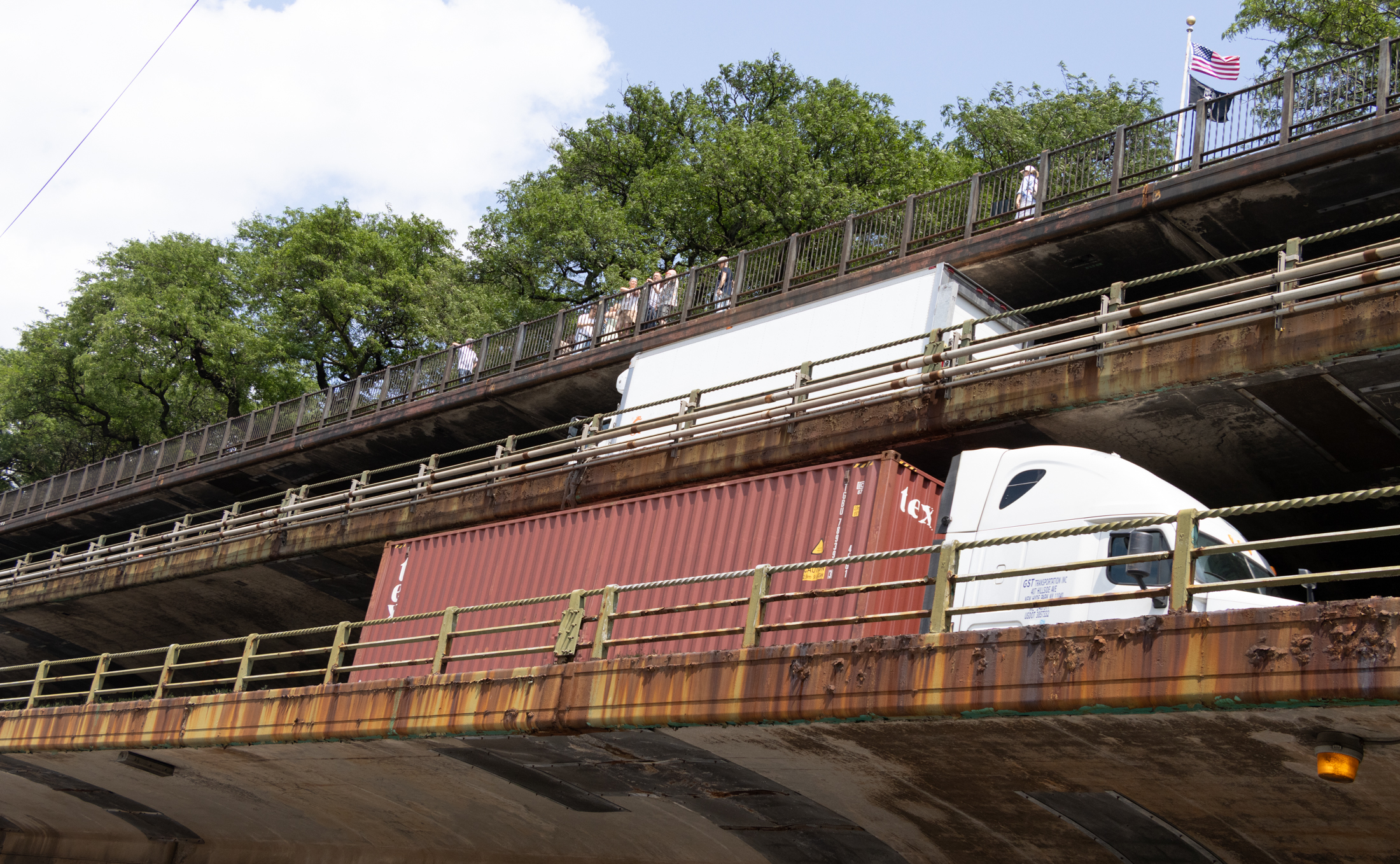Walkabout: Harmony Mills, a Troy-ish Story, 2
Read Part 1, Part 3 and Part 4 of this story. Troy, New York is known as the “Collar City” due to the fortunes made in the manufacture and sale of detachable collar and cuffs, so necessary to 19th century haberdashery. Troy also made shirts and other garments in the many factories that line the…


Read Part 1, Part 3 and Part 4 of this story.
Troy, New York is known as the “Collar City” due to the fortunes made in the manufacture and sale of detachable collar and cuffs, so necessary to 19th century haberdashery. Troy also made shirts and other garments in the many factories that line the Hudson River. Arrow brand shirts were made here until the 1950s. Just across the river is the city of Cohoes, which lies along both the Hudson and the Mohawk Rivers. Both rivers were vital to the cities’ development, not only in manufacturing, but also in transportation, as the Erie and Champlain Canal systems run through Cohoes, and then onto the Hudson through Troy.
A mighty waterfall cascades down the gorge of the Mohawk River bed on the north end of Cohoes, the second highest waterfall in the state, after Niagara Falls. These falls were discovered by the Mohawk people centuries ago, and gave the city its name, the Anglicization of the words meaning “place of the falling canoe.” While a gorgeous natural wonder, especially in the spring, the falls were seen by those who came later as a great source of power. Utilizing water to turn turbines, the falls could generate power to operate factory machinery, something that was figured out not in the late 19th century, as one might suppose, but long before. The Dutch, who were the first European settlers in the area, had been using water power for centuries.
Textile mills were a natural choice, and Cohoes became home first to knitting mills, and then to the largest textile mill outside of New England, and for a while, the largest textile mill in the United States and the world. It was called Harmony Mills, and it was the reason for Cohoes’ nickname as the “Spindle City.” The early history of the area and a very general description of the mill and its surroundings can be found in Chapter One of this story. Harmony Mills is massive, in square footage and in scope. It took the genius of one man to run an operation that at its peak employed at least one person in every family in Cohoes.
The history of the mill is directly tied to the history of the Erie Canal and the efforts by man to harness the power of nature. The falls could never be a part of the canal system as is. So early on, it was determined that a canal would be cut somewhere beside it, so that barges and river traffic were nowhere near the falls and the rapids themselves. The first Erie Canal was completed in Cohoes in 1825. Because of the Falls, there were 19 locks in the Cohoes area to raise and lower boats. Even though they weren’t going over the falls, that 70 foot drop in the topography had to be made up somewhere.
This first canal, nicknamed “Clinton’s Ditch” after then-governor DeWitt Clinton, was only wide enough for one boat, and the back-up in traffic to get through the Cohoes locks could literally take hours, often precipitating fist fights. In 1836, it was decided to enlarge the canal, making it deeper and wider for two-way traffic. The new canal was the largest hydraulic project of the entire 19th century. It was 350 miles long with 72 lift locks, 12 of which were in the Cohoes area. The greatest concentration of locks in the entire canal system was here, providing a total of 112 feet of lift to bypass the Falls.
When the new canal opened in 1841, the original canal was taken over by the Cohoes Company, the power company that owned the rights to all of the river power near the Falls. They used Clinton’s Ditch as a power canal for the mills. And it is because of this canal and other ingenious ways of harnessing water to power turbines, that Harmony Mills was able to become so large. Technology made that possible, but it was the vision of the mills’ owners and the management that made it successful. And most importantly, it was the incredibly hard work of thousands of mill workers, many of them women and children, who made Harmony Mills, period.
The Harmony Manufacturing Company was founded in 1836 by Peter Harmony. He situated his mill between Clinton’s Ditch and the new canal bed, within sight of the Falls. The mill began making cotton cloth, but it was not well managed, and was soon losing money. It operated between 1836 and 1850, and during that time had only one year in which its books showed that they had actually made a profit. In 1850, the mill went bankrupt, and was sold at a sheriff’s auction. The buyers were Thomas Garner, a New York City merchant, and Nathan Wild of Kinderhook.
Garner and Wild were persuaded to buy Harmony Mill by Robert Johnston, the supervisor of a cotton mill in Valatie, NY, that was owned by Wild’s father. He saw the mill, with its position at the foot of the Cohoes Falls, as having potential for greatness. He was so convincing that after they bought it, Garner and Wild persuaded Johnston to leave Valatie and become the manager of Harmony Mill. It was the smartest decision they would make. Robert Johnston would be the driving force in making the mill the largest and most successful cotton mill in the state.
Johnston was not just a good manager; he knew the spinning industry as only someone who had worked in it since childhood could. He was born in England in 1807, and began working in a cotton mill in Dalston-Carlyle at the age of seven. By the time he came to America, in 1830, at the age of 23, he was an expert mule spinner. He began working at the Providence Steam Mills in Providence, RI, where he claimed that Samuel Slater, the “Father of American cotton spinning” would sit down and watch him spin for hours. From that job, he moved to Valatie, and Nathan Wild’s father’s mill. It was there, in 1838, that Johnston created the first mousseline-de-laine (a worsted fabric), in America.
Now a little background that will help explain what Harmony Mills created. Basically, they took raw cotton and spun it into thread, which was then woven into fabrics. Spinning machines, which made the threads, were invented in Britain in the late 1700s, and by the mid-1800s were large iron contraptions that held hundreds of spindles of cotton thread.
These machines were called spinning mules, as they were the product of the union of the old spinning jenny and a water frame loom. The fibers were drawn out, twisted and wrapped onto the spindles, through a series of gears and machinery in a back and forth motion that produced a fine but strong thread. The spinning mule could hold up to 1320 spindles, and could be 150 feet long. Two of these machines were run by one minder with the help of two boys who were called the little piecer and the big, or side piecer. Everyone was usually barefoot in this humid and fast moving environment.
The minder watched the overall operation insuring thread consistency and changed the spindles as they became full. The boys were charged with tying off breakages in the thread and for scooting under the machines and cleaning the heads which became clogged with cotton dust. It was a dangerous job that required constant attention and skill. A good minder was the highest paid worker in the plant, as it was a very skilled job. Robert Johnston had started out as a piecer and had graduated to minder, watching hundreds of spindles at one time, his hands changing out the spindles and feeling the grade of the cotton, while his eyes moved across the field of spindles on two machines. He knew his stuff.
He was one of those people with a boundless nervous energy, not surprising considering his childhood, and he was a great manager. He knew both sides of the coin – worker and management, and he also knew how everything worked. Under his direction Harmony Mill not only got on its feet and began to make money, it soon outgrew the original factory space. With the help of his son, David John, Johnston began an expansion that gave us the huge mill complex we see today.
In 1853, the Harmony Manufacturing Company had become Harmony Mills. They added a new wing to the original factory building, which is called Mill Number 1. The new four story plus attic addition had a capacity of 30,000 spindles and employed 500 hands. In 1857, Mill No. 2 was built, and by 1862, had 48,000 spindles run by 800 hands. Johnston realized that his new employees needed somewhere to live, and so the company built Greek Revival style tenements on nearby Cataract Street, beginning in 1853. More and more housing was built, and the company eventually bought 70 acres of farmland on the hill above the original factory, and built more tenements, houses and company buildings.
Harmony Mills expanded further by buying up the other two mills in the town, and was soon the owner of all of the cotton manufacturing mills in Cohoes. By 1861, as the Civil War continued, Garner and Company had invested two and a half million dollars in mills, tenements and other factory expenses, creating a company town whose business was cotton. In spite of the war, the company grew. (It would be interesting to find out how they got that cotton, in spite of the war. Hmmm.)
In addition to spinning thread, 2,101 looms were running in the three mills full time, weaving white cotton calico, which was then shipped to Newburgh to Garner’s printworks. The printed fabric then made its way down to his New York City warehouses. Robert Johnston’s suggestion to Garner and Wild was paying off big time. Harmony Mills now had more cotton producing machinery running than the largest plants in Lowell, Mass, which had long held the record. It was time for the largest expansion in the company’s history. In 1866, the company began building Mill No. 3, the largest single textile mill in the country. And in the process, they discovered another giant, a prehistoric piece of New York history. GMAP
Next time: Mill No. 3, the behemoth factory building that dominates the landscape. The other behemoth that was discovered buried in the ground that this factory would stand on, and how water power made it all possible. Mill No. 3 was not only the showpiece of the entire complex, it was an engineering wonder. High tech, 19th century style, and the lives of the people who made their living at Harmony Mills, that’s all next.
(Photo:Worker’s housing at Harmony Mills, S.Spellen. Source material: 1998 National Register report for the Harmony Mills complex, as well as local newspapers, and other sources)











I grew up in Albany and remember when the old run down mills were an eyesore of Cohoes. After a dozen years out of the area, I am back and a resident living in Mill 3! Each apartment has soaring 16-18′ ceilings held up by their cast Iron columns and the original wood flooring from nearly 150 years ago. Every day I walk across the floors and see the marks where machinery used to be and am awed by the history that has walked in this space. The huge turbine of mill 1 was left in place and kept exposed by the builders of the lofts. It is an amazing historical and architectural feature on the property. I hope that the writer took the opportunity to stop in to the leasing office to have a tour and climb the winding stairways that thousands of workers traversed a hundred years ago.
This is a great overview of the history of Cohoes! Thank you. I have one minor correction if I may. For the photo you have labeled “Late 19th c. photo. Mill No 1 at left, No. 3 at right, with original canal in between. Canal is now filled in. Photo: Friends of Harmony Mills”, it’s actually Mill # 2 in the foreground left. The modern day photo below it is taken from almost the same spot. Thanks!